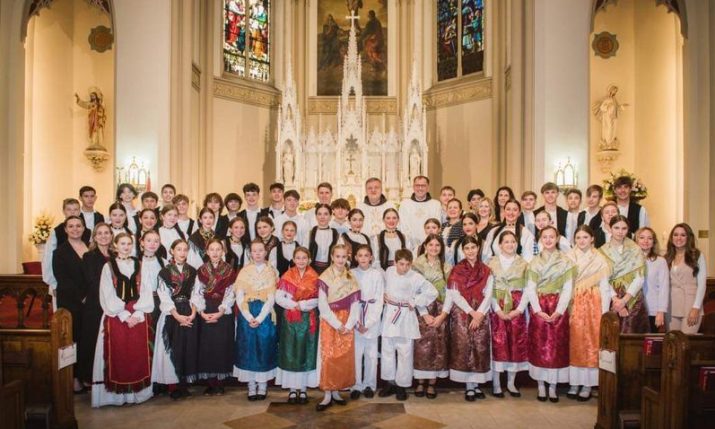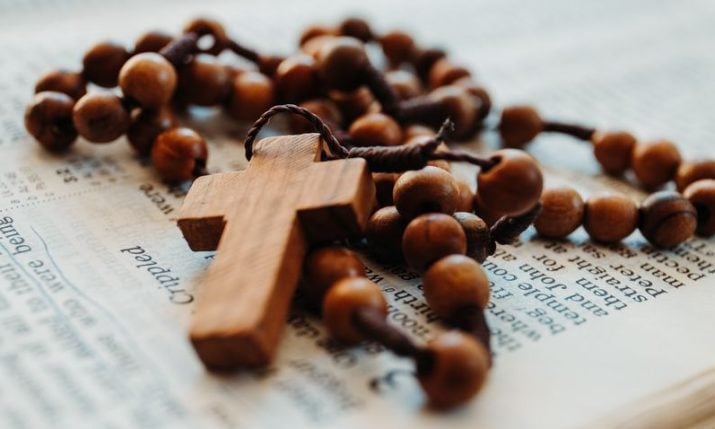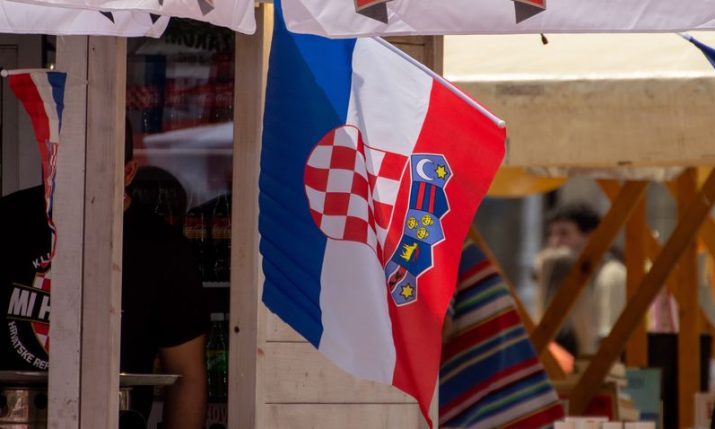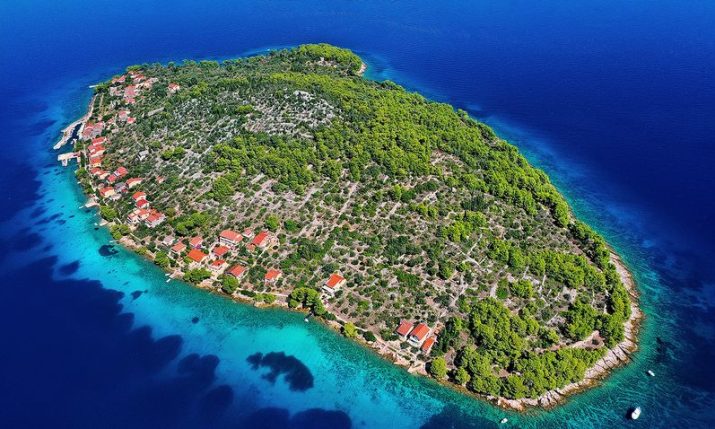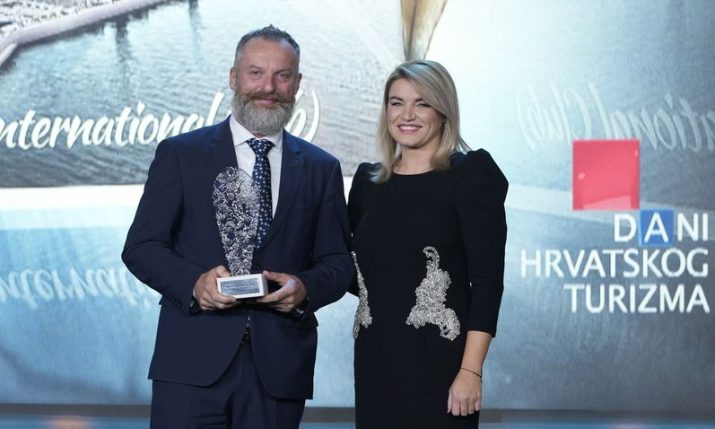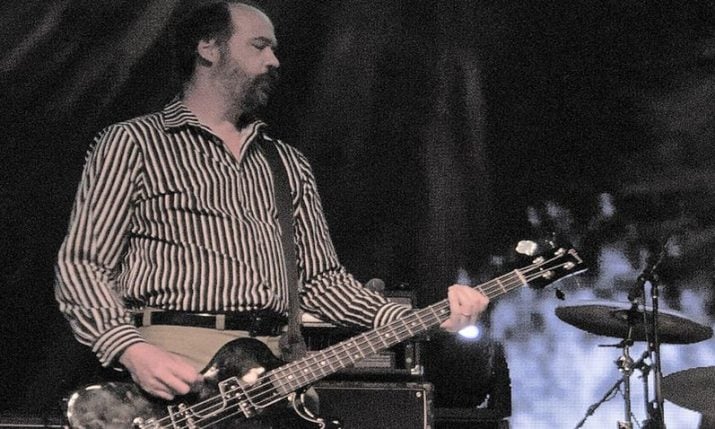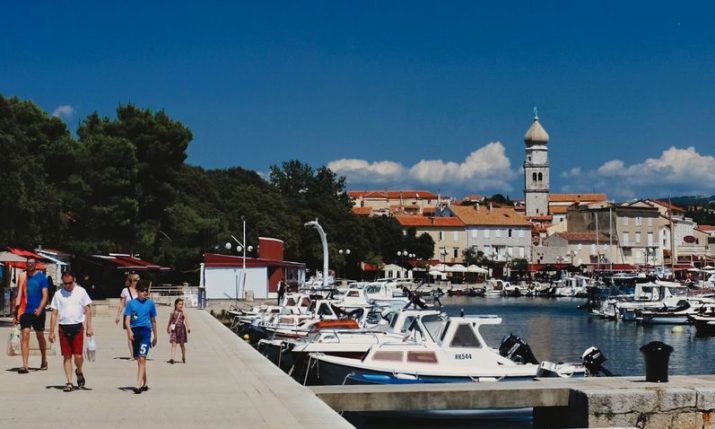Preserving local culture: The Split dialect debate
- by croatiaweek
- in News
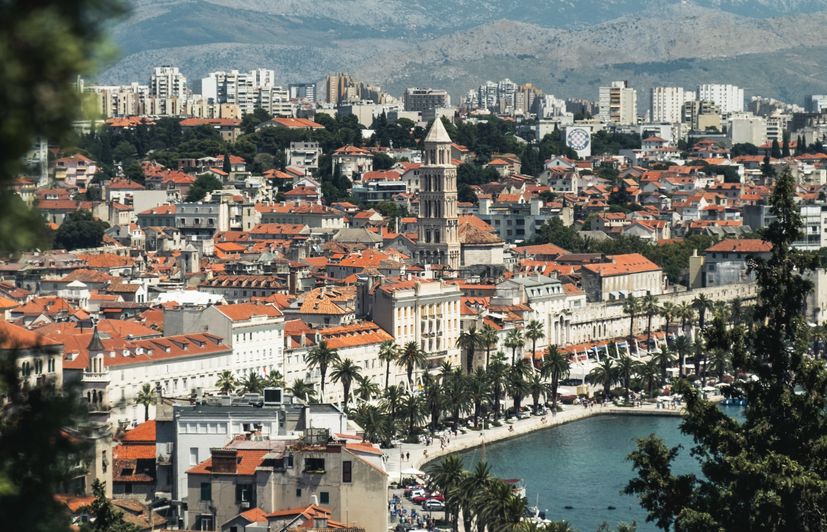
Split
Should Split speech be included in Split primary schools?
The recognition of the Croatian Chakavian language by the ISO organization and its getting an international code (CKM) is a living language of our world as an opportunity to raise awareness at the national level about the problem of the dying of local idioms that are still alive in Croatia.
It is necessary to start the production of native reading and learning books focused on the Chakavian, Kajkavian and Štokavian vernacular languages, representative texts of the written and oral literature. Of all Croatian languages.
Professor Emeritus Joško Božanić from the University of Split, director of the only scientific journal dedicated to the Chakavian language and a foremost authority in Croatian linguistics, in a big interview for Dalmacija Danas, tells why part of the Croatian academia reacted by expressing openly negative emotions to the news that the Chakavian speech was recently recognized as a separate language from the Croatian standard language by the International Organization for Standardization ISO, the international scientific journal Ethnologue and the international organization SIL International (responsible for cataloging all the languages of the world), basically all the most relevant linguistic institutions in the world.
Among other things, he explains how the Croatian standard language could have gone in a completely different direction if some centuries ago the Pope had not heeded the bishop’s recommendation and ordered on June 23, 1633, to postpone the printing of the Bible in “Illyrian” (this was how Croatian was known back then) and Latin.
Božanić also answers the question of who is promoting the introduction of the Split dialect of the Chakavian language in all Split elementary and high schools as part of the local culture program.
He emphasizes that young people still need to be taught that speaking their native “BESIDA / BESEDA” is not a mistake but an important intangible cultural asset of the world and a great source of cultural richness for them and the country of Croatia.
Denial of the significance of an important historical event
The International Organization for Standardization ISO from Geneva included the Chakavian language in its list of living languages of the world in 2020. How did this resonate with Croatian linguists?
– The first reaction I saw in the newspaper was in Slobodna Dalmacija, which published an interview by Damir Šarac (February 2, 2023) with a local scholar, Professor Dunja Jutronić . She expressed the following controversial statement in regard to the news about the assignment of a standardization code to the Chakavian language by the ISO:
“This choice is not relevant for either international or national linguistic science. Linguistic scientists consider both Chakavian and Kaikavian dialects to be “supra-dialects” (a word made up by Yugoslav linguists to describe a uniquely balkan concept that doesn’t exist in other languages of the world, Ed.) with their own many sub-dialects, and they advocate for this through their scientific work but the status of an official – standardized – language is not a scientific, but a political category.“
I cannot agree with some of these statements. First – because I simply do not see how the international codification of a Croatian idiom on the most prestigious international list of world languages could be irrelevant, unimportant.
Was the codification of the Croatian standard language by the same international institution in Geneva (International Standardization Organization – ISO) which happened on September 1, 2008 and which codified the Croatian official (standard) language under the code name ISO 693-3 [hrv] irrelevant? Back then the event was met with national jubilee.
Second – this is not about declaring an “official language” but a language. That’s an important difference. Languages can be official when they are standardized, such as the Croatian standard language, and Chakavian is a vernacular language, such as the Shtokavian vernacular language, which is based on the so-called Jekavian / Ijekavian southern Neoshtokavian dialect, which Croatian linguists have started to call Eastern Herzegovinian-Krajiški dialect only in the last twenty years, and that was standardized as the Croatian standard (official) language only at the end of the 19th century.
Third – the term supra-dialect/narječje, which according to Akademijin Rječnik (33, 586) was introduced by Vuk S. Karadžić and his followers, the so-called vukovci, as a translation of the Russian word [нарѣчие] in Croatian linguistic terminology as a dialect, can in Russian mean a local speech and dialect and a group of related dialects, but also a vernacular (non-standardized) language.
The term Chakavian language in fact means exactly the later – a vernacular language because in Croatia the standard Croatian Shtokavian language is the official language. And fourth – I agree with the position that the status of an official language is not a scientific but a political category, since the official language is the result of an agreement, convention, political decision. So it was also for the Croatian standard language.
All standard languages are artificial and not spontaneous like vernacular ones, because they are standardized by political decision and stylized by linguists and maintained through institutions. But it is a scientific fact at the same time that there is a Croatian Shtokavian vernacular language as well as the Chakavian and Kajkavian Croatian languages which are not standardized even though they were literary languages for centuries long before Shtokavian.
The word vernacular comes from Latin. Vernaculus means native, according to Latin verne – native slave, one who was born in the master’s house. According to the definition in Webster’s dictionary, vernacular is a language that is native to the people, as opposed to a literary one.
According to the article by Željko Rogošić in the weekly magazine Nacional (7/2/2023, 53-55) titled “A Croatian paradox: Chakavian was declared an independent language of the world“, three prominent Croatian linguists, academics, dispute the significance of the international codification of the Croatian Chakavian language. Academician Josip Bratulić says:
“I am not sure that declaring Chakavian an independent language will achieve anything“, professor Silvana Vranić believes that “the Chakavian dialect cannot be isolated and viewed as a separate language“, and professor Mira Menac-Mihalić believes that the decision on the codification of the Chakavian language “means nothing, because on that basis no one will give Croatia money to preserve the language” and concludes: “… we are not talking about the Chakavian language, but Chakavian is part of the Croatian language system.” Therefore, according to this the Chakavian dialect is not a language (which is defined as a system), but it is a language system within a language system that represents the Croatian standard language.
This idea of the Chakavian dialect as a system within a system is incorporated in the concept of the “three-narječje formula” by prof. emerit. Iva Lukežić from the University of Rijeka, according to whom the Croatian language is “unique in the world”. She says:
“…the Croatian language should be used to define every idiom by which Croats communicated with each other through history and by which they communicate. This is the starting point and at the level of organic idioms, in dialectology, the Croatian language is defined as a sui generis complex language structure with three components of the abstract rank of supra-dialects, each made up of a certain number of components of a lower abstract rank of sub-dialects, and according to this three-supra-dialec formula, the Croatian language is unique in the world of languages” (Appendix to the discussion on the genesis of Croatian supra-dialects, Fluminensia no. 1-2. 1996, p. 223).
Questioning this “three-supra-dialects formula” and the “uniqueness” of the Croatian standard language compared to all other languages of our world can get a person in trouble and to be labeled negatively, and is a direct result of the current very foggy scientific situation in the Croatian dialectology field.
Thus, recently we were able to read in a text of M.M. Letica titled “How to explain to dilettantes that Chakavian is not a language, but a dialect of the Croatian language” the following words: “We should arm with facts, i.e. the one truth. And armed with it, resolutely attack the enemies of the Croatian language” (Hrvatski tjednik, 9.2. 2023). Judge for yourself the weight and meaningfulness of such a statement about “dilettantes” and “enemies of the Croatian language” as written according to the author of that article.
Heretical thoughts about the Croatian language in a university textbook
Recently, the Faculty of Philosophy in Split, together with the Literary Circle from Split, published your book “Vernacular Stylistics“, which was recognized the status of a university textbook. Therefore, it is intended to be used by students of Croatian studies. I assume that your book also deals with some issues of the relationship between the Croatian standard language and the vernacular languages, as you call them, Chakavian and Kaikavian, so I would like you to present to us the positions you represent in it, which concern this conversation.
– Yes, in 2019 I published the book “Vernacular Stylistics” as a university textbook for students and teachers of Croatian studies. My specialization is stylistics, and as I am also a dialectologist, I connected these two disciplines in an effort to analyze and interpret the stylistic wealth of various texts written in vernacular idioms, not only Chakavian, and not only literary ones.
This wealth of expressions is completely neglected because in our country dialectologists rarely deal with the stylistic level of expressions, and stylists ignore texts in non-standard idioms of the Chakavian, Kajkavian and Shtokavian vernaculars. But when we talk about this book of mine, it is interesting to say that in it I expressed some “heretical” views that have not caused, until today, any reaction from other professors.
This position of mine is opposite to the above mentioned reactions of other professors of linguistics, because I claim that the Croatian language is one system that cannot logically consist of three systems (Chakavian, Kajkavian and Shtokavian) and that all three Croatian language systems are actually three separate vernacular languages/systems.
In doing so, I follow the teachings of the most prominent Croatian linguist Josip Silić, who distinguishes between language as a system and language as a standard. As I said before, language as a standard is the result of the standardization process and as such the result of conventions, agreements, and the work of institutions, because it does not arise spontaneously in the speech practice of a narrow or wide local community.
Josip Silić says the following about this topic: “In conclusion, we can say that Shtokavian, Chakavian and Kajkavian nariječja are different (language) systems (…). They are therefore separate Croatian idioms, not dialects of one Croatian language. (this does not mean in any way that one narječje is less Croatian than the other). Therefore, it is wrong to speak of Chakavian and Kajkavian phenomena in the Croatian standard language as a dialectal phenomena, i.e. dialecticisms. Dialectisms are not phenomena in the Croatian standard language that come from the Chakavian and Kajkavian dialects, but phenomena that they come from the Štokavian dialect.“
Thus, Chakavian and Kajkavian are separate linguistic systems, not varieties of the Croatian standard language. Dialectal phenomena in standard Croatian can come only from the Shtokavian vernacular, which is the basis on which Croatian was standardized as an official language.
The Croatian father of the nation on the “bleating-speech”
You were a member of the Council for the Normalization of the Croatian Standard Language. What is your experience of participating in the work of that Council?
– I participated in the second convocation of the Council for the Normalization of the Croatian Language, which was created at the invitation of the Minister of Science, Dragan Primorac in 2005, and lasted until 2012, when it was abolished by Minister Željko Jovanović. The president of the council was academician Radoslav Katičić. The topics discussed were mostly about spelling. Some conclusions about orthographic solutions have taken root in orthographic practice, and some suggestions have fallen away.
I well remember the discussion about the accent norm, which caused a polemical tone considering the big divergence of accentuation speech practice between the Chakavian and Kajkavian speaking areas, and the Neoshtokavian accent norm, which got erroneously marked as purely rural pronunciation, despite being native to the 3 biggest cities in Croatia.
This split with the normative Neoshtokavian accentuation appeared mainly due to the realization of descending stresses on internal syllables or due to the omission of the transition of stress from the tonic word to the proclitic, which is the result of the influence of the Chakavian and Kaikavian accent systems.
Today, this practice of diverging is even more pronounced on radio and television, so that two accentual norms have come to life, one could almost say: the one that is prescribed, the Neoshtokavian one, and the one that is increasingly present in public communication in the media, and is the result of accent influence by Chakavian and the dominant Zagreb Kajkavian vernaculars into the standard Croatian language.
I remember well also other discussions, especially the one about the issue of the orthographic norm of writing neću / ne ću or the question of the Ekavian realization of the so-called covered [ r] like in greška / grješka, vremena / vrjemena, strelica / strjelica. I considered particularly absurd that the norm chosen deviated from linguistical rules, and only pursued to increase a (perceived) distance from the Serbian Ekavian standard.
Isn’t it ironic that in our time this hyper-Jekavianism is associated with the defense of the Croatian distinctiveness from the Serbian language, while Ante Starčević , the “father of the Croatian nation”, in the 19th century defended his Ekavian language from the Serbian Ijekavian language of Vuk Karadzic, calling it derogatorily “bleating-speech”, and describing Jekavian / Ijekavian pronunciation as “bleating” (I. Marković : Notes on the language of Ante Starčević, Filologija 71, Zagreb 2018).
On purism according to the Croatian maritime lexicon
What is your attitude towards purism in Croatian linguistics?
– I dedicated a chapter to that topic in my book, because it also touches on the issue of linguistic identity on the lexical level. I will tell you right away that I am not a purist, although today we are all witnesses of the unstoppable penetration of English into all world languages, except for the languages of civilizations that have not yet reached the Internet. You mentioned my participation in the Council for the Normalization of the Croatian Language. I well remember the lively controversy surrounding the idea of croatizing English IT terminology. I then compared that effort with the hypothetical idea of building a dam on the Amazon River. Namely, I am convinced that the influx of English into all world languages is inevitable and unstoppable. On that occasion, I mentioned my own experience in working on the dictionary of a small island dialect, my Komiža dialect, whose dictionary I have been systematically working on for thirty years.
I said on that occasion that in my Komiža dictionary, which contains twenty thousand glosses, about seventy percent of all nouns are of alloglottic (foreign) origin. But all those words that arrived on the island by sea were adapted – accentually, creatively, and morphologically adapted to Komižan speech. Words adapted in this way became our own words, and not foreign words or loanwords, as many Croatian linguists call them. We did not borrow them with the intention of returning them one day when we invent our own words for the concepts they describe.
No, these words have become ours and lived in our speech for many centuries. This vocabulary is now our intangible heritage, a part of the Croatian national identity created on our shores of the Adriatic sea, in our life shared with that sea. But unfortunately they are ideologically uninteresting to our normative lexicographers.
Some of our linguists consider purism to be synonymous with culture. I wonder in what kind of linguistic non-culture I was born and spoke, being that my language was full of words that came to us by sea lines for centuries, and without which we Croats would not know how to talk about the sea at all.
There are two types of purism: exogenous (rejection of words originating from other ethnos) and endogenous (rejection of words from non-standard idioms of the same ethnos). I would like to ask those linguists who talk about the three-supra-dialectal Croatian language and the interweaving of three dialects within the Cha-Kaj-Shtokavian formula, how come that the language of the Croatian Vukovci, who reject almost completely the Kajkavian and Chakavian lexicons in order to prevent the “contamination” of the Shtokavian lexical standard, is still at work to this day.
How come it was only at the end of the twentieth century (in 1990) with the appearance of Anić’s Dictionary of the Croatian language, the first ever purely Croatian dictionary, many names of some commonly known sea fish enter the Croatian dictionaries for the first time? How is it that an entire segment of the national culture, the maritime, coastal and island one, is deleted from the whole of the national culture in our lexicography so that when the Croatian standard (Shtokavian) language approaches the sea – it becomes completely speechless and wordless?
At the same time, it should be underlined that the Croatian nation inhabits a coast almost 6,000 kilometers long, a water area that covers two-thirds of the Adriatic sea and has a maritime culture that is more than a thousand years old. It is the only Slavic nation in the world, which is the guardian of the Mediterranean cultural and linguistic universe.
Branka Tafra, a full-time professor at Croatian Studies in Zagreb, says the following: “The rule of correctness for Croatian was chosen to be the Neoshtokavian Ijekavian dialect, and all words were drawn out of that mold. Back in the day the Croatian vukovci received the authority and power to determine what was to be classified as correct and what was not, and all in accordance with theNeoshtokavian canon (…) Although the vukovci are not usually spoken of as purists, they also practiced a form of purism by persecuting Kajkavisms, Chakavisms, and all non-Neoshtokavian words.” This kind of purism against Chakavisms and Kajkavisms was also brought forward by the language policy of the NDH, which, with its idea of a single Croatian Shtokavian language, had a negative relationship not only toward the non-Neoshtokavian lexicon, but also toward all non-Neoshtokavian literature.
I would like to hear your opinion on this attitude towards dialectal literature since you are also known as a dialect poet?
– Dialectal poetry has nowadays no place in Croatian poetry anthologies. This attitude towards literature written in the vernacular Croatian languages, Chakavian and Kajkavian, has been maintained to this very day.
Just as the standardization of the Neoshtokavian idiom at the end of the 19th century brought the Chakavian and Kajkavian vernacular languages from an equal position to a s subordinate one toward the Shtokavian standard, so literature based on these vernacular languages received the depreciatory attribute of epichoric, regional, indigenous literature. As something filled with sentiment of attachment to some past states, provincial speeches, memories. As such, it is almost completely excluded from the corpus of the national Croatian literature, and its authors have no place in the national literary pantheon unless they legitimized themselves with other literary works in the standard language.
In most anthologies of Croatian poetry, the poems of even our best and most genius dialectal poets are completely omitted. The recent anthology by Tonka Maroević “Svjetlaci – Croatian poetry of the third post-war (1996 – 2019)” presents in the introduction the author’s explanation for his omission of poets who write poetry in dialects. He says: “I believe that songs in the dialect belong to their own language systems, within which they can be measured and categorized, and that it is inappropriate and violent to anthologize them within a whole composed in the standard Croatian language.” With Maroević’s explicit removal of dialectal poetry from an anthology named “Croatian poetry” in its title, his words above could have two meanings: First, that dialectal poetry that is created in Croatia in non-standard idioms is not Croatian, because only poetry that is Croatian is anthologized, and if it is Croatian, yes, since it is dialectal, it does not meet the value criteria (of the author of the anthology) for inclusion in the corpus of representative Croatian poetry.
Or second: phrase “Croatian poetry” in the title is not limited in terms of meaning by anything except the time reference in the title of the anthology – the year 1996 as the starting year and the year 2019 as the final year and, of course, the anthologist’s value judgment – his selection criteria.
According to this interpretation, the term “Croatian poetry” does not include dialectal poetry precisely because those are written in non-standard idioms, which means that the criterion for belonging to the corpus of Croatian poetry is that it is written in the standard Croatian language of Neoshtokavian. Therefore, even if it met the artistic criteria for inclusion in the national anthology, it could not be included because it was not written in the standard national language.
Maroević’s position on the status of dialectal poetry is not very different from Antun Šoljan’s one from year 1965. Šoljan claimed that: “…in one so little literature, the scattering of talents on several linguistic paths (meaning: on several versifications, on several traditions and several tendencies) can be tragic. It seems to me that today the only way forward for a dialectal writer is not to stick to an inanimate or underdeveloped language, but to merge his native idiom with a literary one and thus fertilize and enrich the linguistic matrix” (Three-year chronicle of Croatian and Serbian poetry 1960-1962, Naprijed, Zagreb 1965: 41). This idea about endangering the “linguistic matrix” by writing in vernacular Croatian languages indicates the same kind of understanding of the national cultural monolith, which is threatened by “dispersion”, disunity, endangerment. I, on the other hand, see in these diversity the unique richness of Croatian culture, its diversity, and as a writer I perceive language as a space of freedom, games and linguistic wealth that includes living oral idioms, all vernacular organic speeches that preserve the collective memory of the Croatian people and the millennial work of language and speech.
The Pope against printing the Bible in Latin and Shtokavian
On several occasions, you have mentioned Croatian vukovci, their influence on the process of standardization of the Croatian language.
– Their influence is present to this day, because even today the door towards the Chakavian and Kajkavian languages is closed, as I already mentioned. The influence of Vuk S. Karadžić was decisive in the choice of the vernacular Neoshtokavian basis for the standardization of the Croatian language. The dialect of the Shtokavian vernacular known colloquially as the “southern dialect” of eastern Hrecegovina was not chosen by chance.
This chosen dialect, which was a common dialect also to the Serbian language, became the basis for the standardization of the Croatian language. The founder of the Phonetics Department of the Faculty of Philosophy in Zagreb, Professor Ivo Škarić says the following: “Thus, all epithets for the standard language began to be attributed to that chosen Neoshtokavian dialect, with the consequence that all non-Neoshtokavian idioms began to be considered less valuable despite the natural equality among all organic speeches (as well as among peoples) and the fact that some speeches rejected during the selection, especially Kajkavian and Chakavian, had an extremely rich cultural and literary tradition. As an immanent property of every standard, Neoshtokavian moved psycho-sociologically from a horizontal relationship with other speeches to a vertical, hierarchical one, where it was adorned with all the then valid epithets of a literary language: superiority, class , cultural elitism. The contemporary speakers of Neoshtokavian as an organic idiom, boasted then of self-satisfaction that they are already well-spoken by birth and that others speak “objectively” in an ugly and funny way” (I. Škarić – Hrvatski govori, Školska knjiga 2006: 19-20).
The process of standardization of the Croatian language toward a Neoshtokavian vernacular base began in the first half of the 17th century with the translation of the Bible by the Roman Jesuit Bartolo Kašić, originally from the island of Pag, author of the first grammar of the Croatian language (Institutionum linguae Illyricae libri duo, Rome, 1604). For his translation, he chose Latin and the folk Shtokavian language of the Dubrovnik region, relying on the language of the Dubrovnik literary tradition. But his attempt was stopped by a letter from then Zagreb bishop Franjo Ergelski to Pope Urban VIII.
The bishop recommended that the printing of Kašić’s Bible be postponed. The Pope accepted the bishop’s recommendation and ordered on June 23, 1633, to postpone the printing of the Bible in the Illyrian language. That delay meant de facto a ban, and the main reason for that ban was that it was translated into the Dubrovnik dialect (“Ragusina vulgari lingua“), which will not be understandable to all Croats, and in Latin script, not Glagolitic or Cyrillic, which were used by Croats at that time. And so the printing was “postponed” for 367 years, when the conditions for the printing of this capital work of the Croatian written word were finally met, but not in Croatia, in Germany.
So the resistance to printing came from Zagreb, out of the suspicion that Kašić’s Bible translated into Shtokavian speech of the Dubrovnik region would not be understandable to Croats in other regions and because of the choice of the wrong script – Latin. If Pope Urban VIII did not accept the recommendation of Zagreb bishop Franjo Ergelski, but the advice of the Sacra Congregatio de propaganda fide that suggested Kašić’s Bible be printed, probably the process of standardizing the Croatian language would have followed a different path and the Croatian language would, I believe, be quite different from the one with which I am now answering the questions posed to you.
The Croatian terminological and linguistic fog
Do you expect resistance from politicians inclined to unification and centralization of everything, disinclined to any diversity, regionalization and the like? What kind of argument do they use to defend their positions?
– Croatian linguistics is strongly influenced by politics, to such an extent that even some of the greatest Croatian linguists in their scientific works and public speeches changed their initially declared positions on the Croatian language in order to harmonize them with the dominant political narrative. It is a huge defeat for science. I remember a great national celebration when, on September 1, 2008, in Geneva, the International Organization for Standardization (ISO) assigned the code to Croatian Shtokavian and accepted it as a standard language on the list of world languages. It was a national feast. When this same institution assigned the code to the Chakavian language in 2020, the event was first hushed up in the Croatian media, and then two years later, negative evaluations of that act appeared. Language is the most important symbol of ethnicity in our country, and the romantic idea of ethnicity popular in the 19th century, which is still alive today, needs a community of one “blood, soil and language”. At the same time, Croatian politics and Croatian linguistics are burdened even today by the common Neoshtokavian vernacular basis of the Croatian and Serbian languages, which is an indisputable scientific fact. The declaration of Croatian as the only triune (that is tri-dialectic) language, “unique in this respect in the whole world”, as Prof. emerita Iva Lukežić claims, is a politically useful, but totally unscientific attitude favored by the Croatian terminological and linguistic fog.
Chakavian at the top of UNESCO’s intangible heritage list
Did this recognition open the door to saving the Chakavian language from extinction through the Croatian education system or is this an illusion in itself? What should be done to teach and nurture the Chakavian language outside of the optional subject in elementary and high schools?
– The world’s linguistic diversity is today more threatened than its biological diversity, but it is just as important as biological diversity for human survival. “Language is what is most human in a person,” says the French linguist Claude Hagège, author of the book “Stop the extinction of languages” (Disput, Zagreb 2005). The death of any language, no matter how small, is also the death of a whole world that existed in it and through it.
UNESCO’s Paris Convention on Intangible Cultural Heritage (Convention for the Safeguarding of the Intangible Cultural Heritage) from 2003 defined the list of intangible heritage of the world, and at the top of that list is language (oral tradition and expressions, including language as a vehicle of the intangible cultural heritage. It is about language as a carrier of intangible cultural heritage. By the end of this century, half of the 5,000 languages alive today will disappear from planet Earth if current trends continue, says Hagège.
I see the recognition of the Chakavian language and its receiving of an international code as a living language of the world as an opportunity to raise awareness at the national level of the problem of autochthonous dying languages that are still alive in Croatia today. It is necessary to start the production of native reading books with Chakavian, Kajkavian and Shtokavian vernacular languages, that is, with representative texts of written and oral literature. I made such a digital book for the children and young people of the island of Vis as part of the national cultural asset preservation program “Cokavski govori otoka Visa”. This type of digital readings should be made for Split as well, based on the very rich literature available in the Split dialect of Chakavian.
Introducing the Split dialect of Chakavian in all Split schools
The association “Marko Uvodić Splićanin for the research and preservation of the Split Chakavian language” fought, on the initiative of its president Jadranka Mardešić Komac, for the Ministry of Culture of the Republic of Croatia to issue a decision in 2013 declaring the “Split speech (Split Chakavian language)” a national intangible cultural asset. The same association, together with the Split local section of the Čakavski Sabor, has been trying to fight for the introduction of Split speech in all Split primary schools as part of the cultural program for several years.

Split
The councilor Damir Barbir even asked the following parliamentary question during a session of the City Council held on February 16, 2023: “Does the City of Split want to support the initiative that the Split speech, as a most important and most endangered cultural property according to the UNESCO Paris Convention from 2003, and as a national cultural heritage according to the decision of the Ministry of Culture and Media of the Republic of Croatia, to introduce it as a subject in the curricula of primary and secondary school education, and to provide funds for the financing of that program, which should also include the creation of a ‘Reading book of the Split Chakavian language’ According to the information of representative Damir Barbir, the mayor of Split, Prof. Ivica Puljak, Ph.D., responded positively to the question, and the official decision of the Split City Council is awaited.
A virtual living museum of the Chakavian language from Pelješac to the west coast of Istria
How do you plan to take advantage of the newly acquired status as an internationally recognized language with its own language code?
– The Čakavski Sabor, an organization which today has 25 sections all over Croatia and was founded in 1969 in Žminj, and the journal of the Literary Circle in Split “Čakavska rič“, which has been published for fifty years as the only scientific journal in Croatia and in the world dedicated to the research of the Čakavian speech, gave so far the greatest contribution to the preservation of the Chakavian region from Pelješac to the west coast of Istria.
On the occasion of this international recognition of the Croatian Chakavian language, I intend to send an initiative letter to the Čakavski Sabor in Žminj to initiate the procedure for the registration the Croatian Chakavian language in the UNESCO Red Book of Endangered Languages for Europe and in the UNESCO Atlas of the world’s Languages in danger which contains 2,460 languages from around the world, through the support of the Ministry of Culture and Media of the Republic of Croatia, its Directorate for International Cultural Cooperation, the Service for UNESCO.
The red book already contains five registered languages from Croatia (with code characters) from Croatia (Istriot, Istro-Romanian, Venetian, Ladin and Romani).
This is the first step that must be taken in order for us to be able to fight and to get the possibility of launching projects under the EU funds for research, valorization, education and preservation of the Chakavian language, with an emphasis on the possibility of its digitization, which is imperative at this moment.
This means networking between many Chakavian speeches, creating a common database of all written texts, books, audio records and videos, networking all glossaries and dictionaries between them.
In other words: we are launching an initiative to create a Virtual Living Museum of the Chakavian language from Pelješac to the west coast of Istria. Such an idea requires the energy of young people, who have yet to learn that their native BESIDA / BESEDA is not a mistake but an intangible cultural asset of the world.
Anecdotes about the life and death of the Komiža speech
On February the 10th of this year, you held a lecture at the Marko Marulić Library in Split entitled “The Future of the Croatian Chakavian Language”. I would like to conclude our conversation with your answer to the question of what is the future of the Chakavian language.
– I will start my answer with two anecdotes. The first is the one I heard from our famous director Hrvoj Hribar, who some ten years ago in Komiža sat at a cafe on the Komiža waterfront with his then ten-year-old son. It was winter time when only Komiža people sit on the terrace, because there are no tourists at that time. When they finished their drinks, the father called the waitress to pay, and then the son whispered to him: “Dad, you should pay in euros here, don’t you hear how they speak?”.
The second one is the one I told during the public lecture “The Future of the Chakavian Language” in Split. It happened recently, when I boarded a bus from Komiža to Vis. The bus was full of primary school children from Komiža who were going to Vis, where they have organized some free school activities – football and music. When I took my place in the bus, I carefully listened for a while to the children’s to see if I could recognize any part of the Komiža speech, but I didn’t manage to hear a single one. I then stood up like a teacher and asked loudly, to silence the roar and attract their attention, if any of them speaks Komiški… A single boy quietly told me that he speaks Komiški. When I asked him “how come you don’t speak Komiški here on the bus?“, he replied that he only speaks komiški at home, and that he doesn’t speak komiški among his peers “because they would laugh at him“.
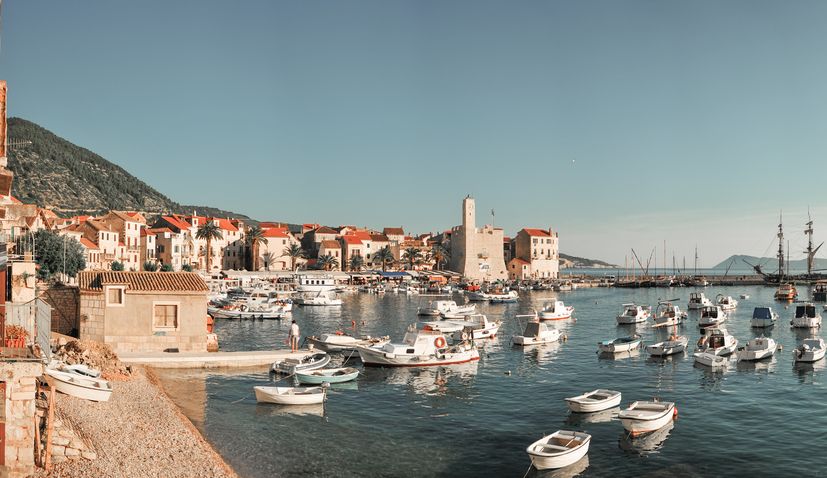
Komiža
This is the reality of the state of the Komiža Cokavian speech, probably the best-preserved Chakavian speech in Dalmatia. This is also the answer about the future of the Chakavian language.
In those past ten years, a dramatic change took place. I, who have been researching the Komiža dialect for more than fifty years, can competently say that I am a witness to the rapid death of one of the most well-preserved Chakavian dialects, the research of which I devoted my life. Today, the organic idiom of the Chakavian language cannot be expected to maintain its basic communicative function. Such an expectation is unrealistic.
How to save the Chakavian language
However, it is imperative that through the education system, starting from kindergarten to high school, we raise, encourage and nurture awareness of the native language as an intangible cultural heritage by which we recognize our own selves.
That we understand it as a most important element of our identity, because language is what is most human in a person. Education is the only tool left to us. The task of raising awareness of organic speech, dialect as a fundamental cultural value, and not a sign of provinciality, rigidity, grammatical mistakes, is the most difficult task of the educational system.
When it comes to the Chakavian speaking region, it is especially important to highlight the vast area of national culture that remained on the margins of the interests of Croatian standardologists in the 19th and 20th centuries, namely the maritime culture imbued with millennial experience of the sea and encounters with other Mediterranean cultures and languages.
This thousand-year-old linguistic heritage is not someone else’s, but an authentic and indigenous Croatian heritage, without which the Croatian language is poor for one very important function in the area of its linguistic superstructure.
It is time for the Croatian standard language to open up to its vernacular languages and accept them as equal. It is one of the most important ways to ensure their survival.
A monolingual perspective
Not only vernacular languages and their dialects and organic speeches are under threat today, major languages are also under threat due to globalization processes and the IT revolution. In the romantic era of the creation of nations and national languages in the 19th century, there was a belief that the creation of a standard national language as supraregional and omnifunctional, fulfills the basic requirement for the nation’s entry into modern civilization. At a time when Croatian linguists, headed by Bogoslav Šulek, created terminologies for many scientific disciplines and professions, which was the imperative of language standardization, there was a belief that language standardization is an ending process, and that the completion of that process is the achievement of the most important national goal – the establishment of a national linguistic identity as a presumption of political sovereignty.
At a time when a scientific work written in the national language, which is not English, practically does not exist, a question arises about the basic need of a standard language. Its omnifunctionality compared to the vernacular ones implied in the past that it satisfied all the functions of a language, including the participation in all types of scientific discourse. The weakening of such competence of the national standard language means the beginning of its revernacularization – returning to the pre-standardization epoch.
Children acquire the English lexicon through the Internet and other media at an early age. This lexicon becomes part of the vocabulary of their mother tongue because they have an affective relationship with it as the earliest linguistic experience of communication that binds a person to his origin, to the beginning that determines his identity. If English words are also found in that original experience, and it is undeniable that there are more and more of them in those first children’s vocabularies, then that alloglottic lexicon cannot be foreign, it is native, familiar, that is maternal from the beginning of human life. It is a process that no language policy can prevent or stop.
This process is the linguistic reality of today’s time of global communication. Only from the position of ignorance of living language processes and their laws for such adopted anglicisms can one speak of “foreign” or, a little more mildly, about “borrowed words”. Those words, adopted in the process of gaining awareness of the world that surrounds the child, cannot be alien to him, the child, nor will he return them one day like a borrowed toy.
We don’t have to be futurists to imagine how the Croatian standard language becomes vernacular in relation to the world language – English. The nationalist idea of a language policemen who, at the borders of the Croatian language, conceived as a national identity symbol, watch over words that cross the state border with a language passport confirmed by the so-called distinctive vocabularies, loses its meaning with the advent of electronic communication, which abolishes all state borders.
This is a reality that is already witnessed today by young parents whose children, through the Internet and social networks, create social communities that go beyond not only their native idiom but also their Croatian standard language, and their contacts do not even know time zones because they are planetary.
These contacts are freed from spatial limitations because these distances have disappeared in electronic communication, namely, they have been reduced to the time duration of one “click” or the blink of an eye. When a child’s fingers move across the keyboard with an incredible memory of the results of pressing the keys visible and audible on the screen, there is no such force that will separate children from that source of knowledge, nor from the words with which they will store that knowledge in their memory, open to all possible influences that can reach them.
The worldwide process of glottophagy – the destruction of the language
However, with this statement, which is not at all optimistic for the future of the Croatian standard language, one should remember a universal law that says: every gain has its price, that is, it must be paid for. The price that the global language pays today for its globalization can perhaps be seen when the text of a local idiom is tried to be translated into that global language.
A slightly careful analyst will not miss the loss of many nuances of meaning, the connotative value of certain words and expressions will be reduced, and sometimes the basic meaning will be impossible to express in a new language setting in the act of translation. This will happen not only when translating to English but also to Croatian or any standard language.
What does this mean? What are the repercussions of the global process of glottophagy – the destruction of language? If many discourses are already impossible to say in English today, will English begin to lose its omni-functionality already in the near future; the ability to say anything with it?
My experience of dealing with one microlanguage – the Cokavian language of the island of Vis, confirms this.
In my book Vernacular Stylistics, I interpreted an entry about the sea in the Komiža language with the title “Guc”, written from the perspective of a seven-year-old boy, written by Zdravko Stanojević from Komiža. I tried to imagine what would happen, what would break through the translation into the magnificent kaleidoscope of colors, shapes, mirrorings, reflexes of shapes, colorism of the restless surface of the sea, sensations and the entire sensorium experienced by a boy at the stern of a boat that slides across the surface of the sea on its oars in to the text “Guc”, in a comic speech. The answer is – There would be nothing left!
But if it were not so, there would be no great harm from the disappearance of small idioms because, as we have already said, the loss of a language, no matter how small it may be, is also the loss of the world to which it belonged. Therefore, we will end this conversation with the words of the French linguist Claude Hagège from his book Stop the Extinction of Languages (Disput, Zagreb 2005: 7): “Defending our languages and their diversity, and especially defending them from the dominance of one language, is more than defending our cultures. It is defending our lives.”
Author: Branko Galić, DalmacijaDanas
Translation: Marin Tudor

